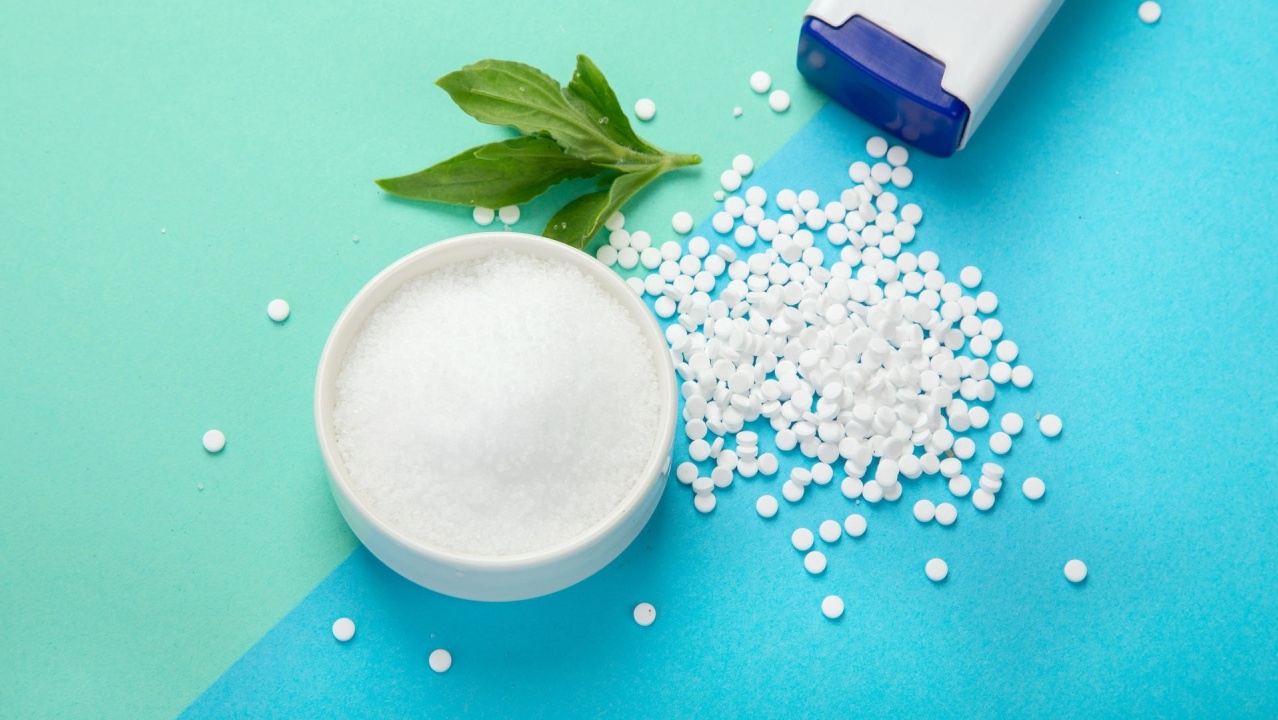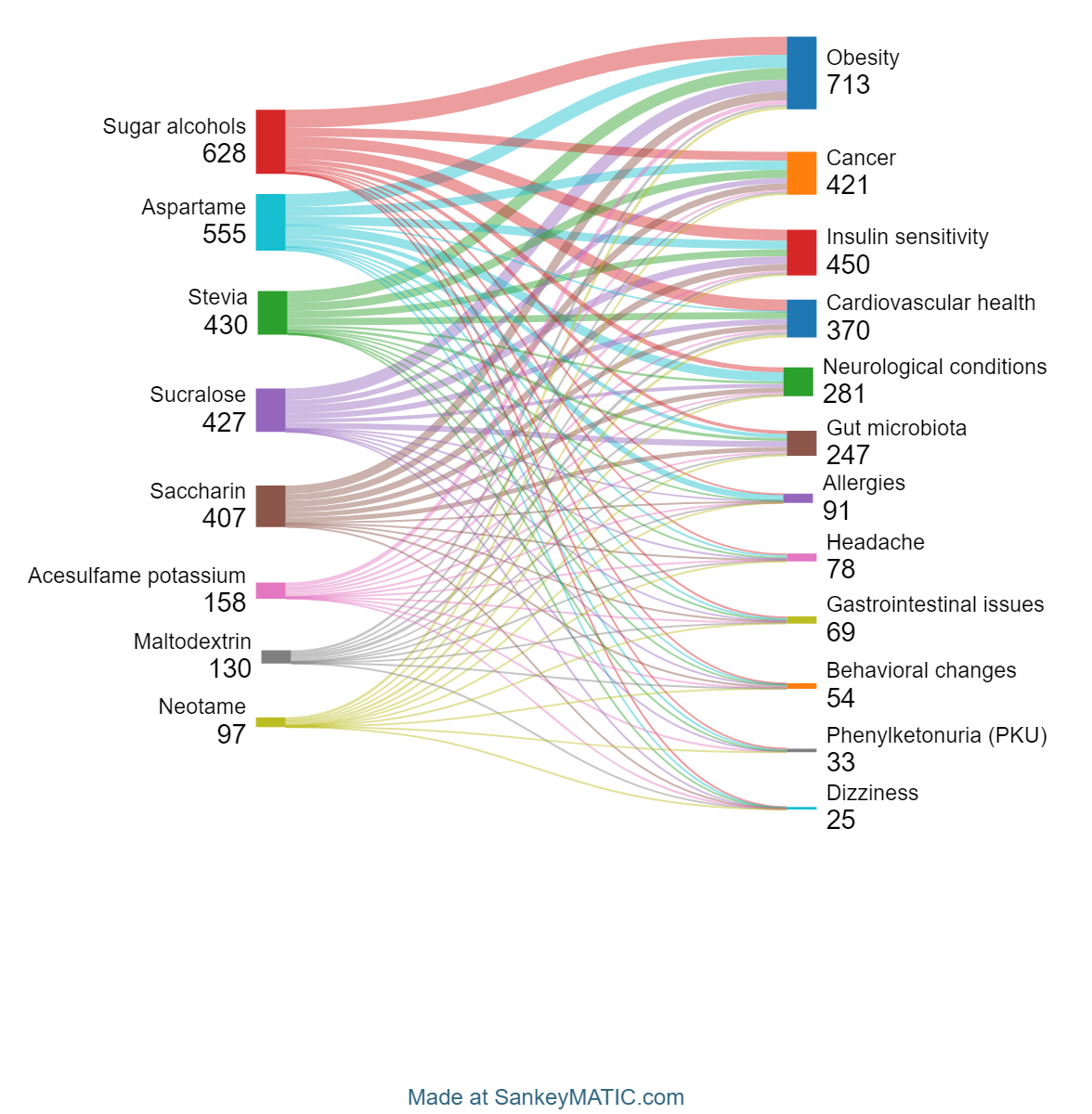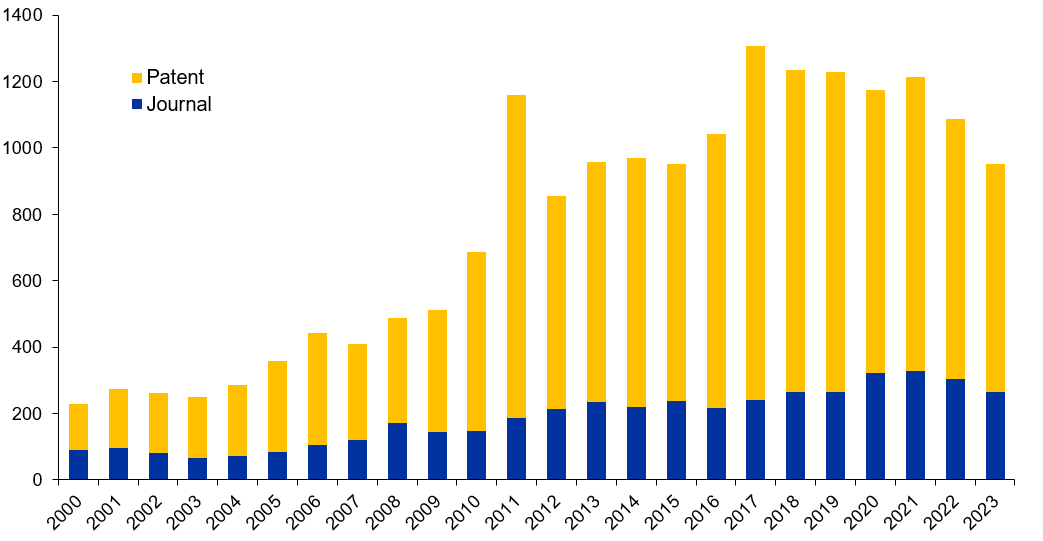Gain new perspectives for faster progress directly to your inbox.

In 2023, the International Agency for Research on Cancer (IARC), working with the World Health Organization (WHO), classified the artificial sweetener aspartame as “possibly carcinogenic” to humans. While this designation was based on limited evidence from studies, it led many people to wonder if drinking diet sodas and consuming other foods with aspartame increased their risk of developing cancer.
The facts are more nuanced than it may appear — the JECFA maintained there is an acceptable daily intake (40 mg/kg or equivalent to more than a dozen cans of diet soda for a 150-pound person by some estimates) of this sweetener, and the FDA didn’t change its classification of aspartame after reviewing the IARC’s findings.
Consumers may be asking what the risk of consuming this or other sweeteners is, and why regulatory agencies across the globe are releasing seemingly contradictory information. This isn’t the first time that a sweetener has been examined for safety issues, nor is aspartame the only option on the market. There are naturally derived sweeteners such as stevia and thaumatin available. Numerous sugar alcohols, such as sorbitol xylitol, are used in candies and cookies. The benefits of these and other sugar replacements include lower calorie counts and not causing blood sugar levels to spike, but there have been many concurrent questions about their safety. A recent analysis of the CAS Content CollectionTM, the largest human-curated collection of published scientific information, offers some insights on these questions.
Aspartame has been used as a sugar substitute since its approval by the FDA in 1974. This artificial sweetener is most often found in beverages, foods, and chewing gum. Aspartame has been studied for decades, and our analysis of the CAS Content Collection shows over 1,000 publications, including journal articles and patents related to aspartame since the year 2000 (see Figure 1).

The recent concerns raised by the IARC do not amount to a smoking gun linking this sweetener to cancer occurrences. As the WHO summarized, “the IARC classified aspartame as possibly carcinogenic to humans on the basis of limited evidence for cancer in humans… limited evidence for cancer in experimental animals, and limited evidence related to the possible mechanisms for causing cancer.”
This means the consumption of aspartame isn’t entirely risk-free, but those risks must be weighed against others stemming from consuming sugar. For example, eating foods with sugar substitutes can help manage obesity in the short term. Aspartame is about 200 times sweeter than sugar, so much smaller amounts of it are used in foods and beverages to achieve a sweet taste. As a result, it contributes fewer calories to foods and generally won’t raise blood sugar levels at this small scale.
Obesity has numerous well-documented health risks including cardiovascular diseases and Type II diabetes, so limiting weight gain and keeping blood sugar lowered is very important for many patients and may override other risks with sweeteners.
Conversely, foods and beverages with aspartame may not be the most nutritious choices, and if people eat more processed foods, that can cancel out any benefit from “low-calorie” foods. In addition, consumption should be limited in people suffering from a rare genetic disorder called phenylketonuria, which affects how the body digests phenylalanine, one of the 2 amino acids present in aspartame apart from aspartic acid.
In general, maintaining a healthy diet remains paramount, and people should adhere to the acceptable daily intake of aspartame. The JECFA reaffirmed an acceptable daily intake of 0- 40 mg/kg of body weight, which means someone weighing about 155 pounds (70 kgs) would have to drink 9-14 cans of soda per day to exceed the acceptable daily intake.
What other sugar substitutes are there?
People have been inventing and identifying sugar replacements for over a century. Some are synthetic, and some are from plant sources. As the CAS Content Collection reveals, many common sweeteners are being researched, and they have different metabolic reactions and carcinogenic risks:
- Saccharin: First discovered and used in 1879; low-calorie sweetener that isn’t metabolized; concerns about it being a possible carcinogen.
- Sucralose: Synthetic sweetener; calorie-free and isn’t metabolized.
- Acesulfame potassium (Ace-K): A common sugar substitute used in baking since it is heat stable and isn’t metabolized.
- Stevia: Natural sweetener from the plant Stevia rebaudiana; low-calorie; noted for potential antioxidant and anti-inflammatory properties.
- Neotame: Derivative of aspartame; does not metabolize to phenylalanine completely, which makes it a safer alternative for patients with phenylketonuria.
- Thaumatin: Natural sweetener from the plant Thaumatoccus danielli.
- Cyclamate: Synthetic sweetener and its corresponding salts are banned in the U.S. for carcinogenicity.
- Sugar alcohols: Group of monosaccharide and disaccharide polyols such as xylitol, sorbitol, maltitol, mannitol, erythritol etc.; can cause bloating or gastric issues.
The sweetness intensity of these sugar substitutes plays an important role in their usage in foods and beverages. Those that are sweeter than table sugar only require a very small amount added to products, which results in fewer calories in those products. Some artificial sweeteners are hundreds or even thousands of times sweeter than sugar (see Table 1):

Where are artificial sweeteners and sugar substitutes used?
These products are incorporated into a variety of foods and beverages and items where taste is important, such as chewing gum and toothpaste. Diet soft drinks and foods labeled “sugar-free” frequently include sugar substitutes. Data from the CAS Content Collection shows that sugar alcohols, aspartame, stevia, and Ace-K are the most commonly used sweeteners across various product types (see Figure 2).

Are there health concerns with other artificial sweeteners?
The low-calorie nature of artificial sweeteners makes them popular choices for products labeled as healthy or diet friendly. As noted, obesity and diabetes are indeed serious health problems, and lower-calorie, sugar-free foods that help people with their weight and blood sugar levels are welcome innovations.
However, aggressive marketing strategies by sweetener producers fail to disclose the potential long-term health implications of these products. Our analysis of journal and patent publications in the CAS Content Collection shows the correlation (not causation) between prominent sweetener categories and various health conditions (see Figure 3).

For example, reports suggest the use of non-nutritive sweeteners in beverages led to an increase in coronary heart disease and kidney disorders. Recent studies have also shown that artificial sweeteners cause insulin levels to spike like sucrose, indicating that they aren’t beneficial for diabetic patients. In an obese, non-diabetic population, sucralose caused a higher spike in insulin levels compared to the non-sucralose ingesting control group.
Together, these reports show that sweeteners are commonly associated with conditions such as obesity, diabetes, or other metabolic disorders, and therefore, more studies are required to assess these correlations and long-term effects.
What can we learn from the literature about artificial sweeteners?
Journal and patent publications over the past 20-plus years demonstrate that the research community still has much to learn about artificial sweeteners. As Figure 2 shows, there are numerous correlations between sweeteners and health problems in the literature, but more definitive studies are needed.
Our analysis found about 30,000 publications related to artificial sweeteners from 2000-2023, with patent publications occurring about three times as often as journal publications, demonstrating that commercial interest dominates this field (Figure 3). Given the usage of these sweeteners in food and beverage products, this trend towards commercial interest is understandable. According to Pitchbook, since 2016 there has been a drastic increase in the amount of capital invested and the number of deals done within this artificial sweetener space. (Figure 4)

As obesity becomes an increasingly global health problem, more artificial sweeteners will be sold as low-calorie improvements over sugar. The research community will, therefore, be crucial in identifying the potential health risks and benefits of these products, so that people everywhere are equipped to make wise dietary decisions. Learn more about how recent FDA approvals for weight loss drugs are also fighting obesity in a recent article on Wegovy, Ozempric, Mounjaro (now called Zepbound), and new classes of emerging treatments that are targeting GIP and GLP-1 receptors.



